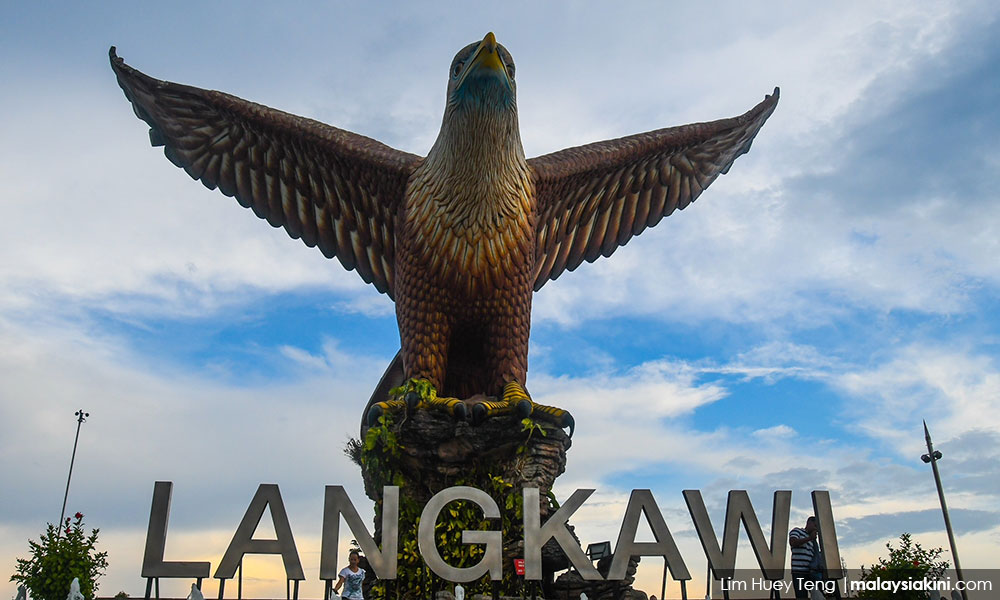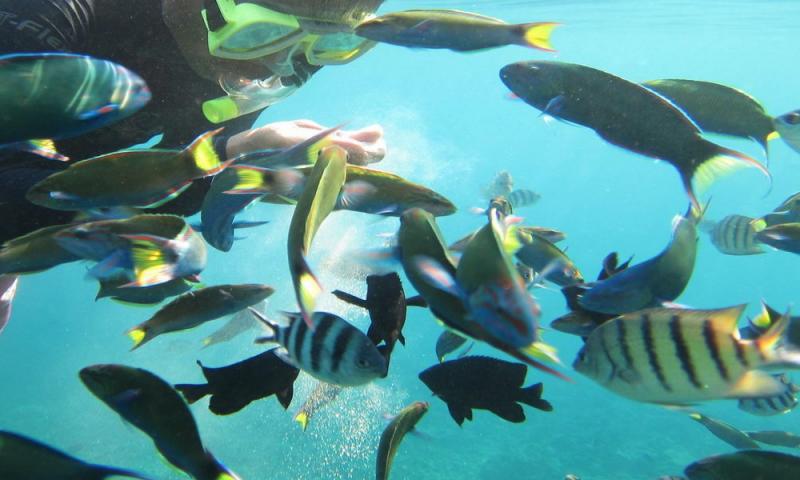LETTER | Concern over RM40b development project in Langkawi
LETTER | We from the MareCet Research Organisation (MareCet), a local marine conservation NGO, are disheartened with the recent news of the proposed RM40 billion Widad@Langkasuka mixed development project in Langkawi, which was highlighted in various local news portals on Jan 20 and 21, 2021.
We are deeply concerned about this mega development project that reportedly will involve reclamation of about 800-1000ha (1900+ acres) of coastal sea area in Langkawi for an artificial island complete with luxury resorts, golf courses, business centres and shopping malls.
Dredging and infilling in an area that is as biodiverse as Langkawi would bring about detrimental effects to the local wildlife and marine ecosystems. Intertidal organisms such as crabs, juvenile fish, octopus and much more also call the surrounding mudflats and reef flats home.
Silt, which is often a product used in land reclamation projects, will enter the waterways and end up suffocating these animals. Langkawi’s sediment is already extremely fine and any disturbance to it will cause extreme turbidity and low visibility in the waters.
Additionally, reclamation projects often produce a lot of underwater noise, which severely impacts many types of marine life, including dolphins and porpoises that rely heavily on sound underwater for navigation and communication.
The noise produced by reclamation activities in the water will impact these animals as the loud noise generated masks the sounds made by these animals to communicate with each other and is particularly significant when it affects important sounds such as mother-calf calls.
The effects can cause a decrease in foraging, a reduction in reproduction, and higher energetic demands by the animals as they react and adapt to the changing conditions.
Behavioural change in those animals is also expected as a result of exposure to loud noises at sea. Dolphins may avoid the area or change their acoustic activity, with negative implications to the animals’ welfares.
In the long term, the ability of dolphins or porpoises to respond to certain sounds could reduce with such changes, and are likely to cost the animals their survivability.
Besides threats to local marine life, a project of this scale would also affect the livelihood of local fishermen; there are several coastal fishing communities directly adjacent to the proposed development site.
It is expected that due to degradation of the surrounding marine habitats, their catch will drastically reduce thus requiring them to have to go further out to sea to be able to obtain a meaningful catch, thus endangering their lives and increasing the cost of their fishing efforts.
The Indo-Pacific humpback dolphin and the Indo-Pacific finless porpoise call Langkawi’s waters home, and occupy the tropical waters of the archipelago year-round. Both species are listed as totally protected marine endangered species under the Malaysian Fisheries Act 1985, particularly under the Fisheries (Control of Endangered Species of Fish) Regulations 1999, and are both listed as "Vulnerable" on the International Union for Conservation of Nature’s (IUCN) Red List of Threatened Species.
Projects like this are bound to decimate their numbers as it threatens the sensitive ecosystem in which they inhabit, degrades the habitat and also affect their food source.

MareCet has been conducting dolphin research and conservation work in Langkawi since 2010. Observations from our research have found that the location of the proposed development as well as adjacent areas are important feeding grounds for both species.
We have documented numerous sightings of finless porpoises in the vicinity of the Widad@Langkasuka project development site, with most of these porpoise groups (including those with young) observed feeding and foraging.
Dolphins and porpoises generally prefer sites that correspond to areas of good food sources, good conditions for prey capture and offer protection for their life cycle (eg breeding, calving, socialising, feeding and resting). Our research suggests that Langkawi’s coastal waters fulfil some, if not all, of the above criteria.
Therefore, we believe that the area is important for their survival. It is for those reasons that in 2019, the IUCN designated the waters of the Langkawi Archipelago as an Important Marine Mammal Area (IMMA). Dolphins and porpoises are not only considered sentinels of ocean health but also have potential to be a source of ecotourism attraction for Langkawi.
Boasting more than 99 beautiful islands that are both rich in biodiversity and geological importance, it is strangely peculiar that anyone would want to build an artificial island in the same area. Where tourism is concerned, Malaysia should be boosting its rich culture and diverse natural habitats.
If only one cared to look, they would find that our country is home to a spectacular range of flora and fauna. Many Malaysians are still unaware that our waters are home to the likes of dolphins and porpoises, animals whose local populations will likely decline as a consequence of this project.
Another point of contention is that a project of this scale is projected to take almost 20 years to complete. In all that time, the important value and ecosystem services provided by our marine environment will be lost, while uncertainties remain on the value the project will bring to the local economy.
Additionally, the 20-year development period at the main gateway to an island priding "Naturally Langkawi", will only provide an eyesore to the millions of tourists that visit Langkawi each year, most of whom visit to enjoy the natural beauty that Langkawi and its surrounding islands have to offer.
We strongly urge the relevant authorities to rethink this decision, and obligate the developers to conduct a detailed environmental impact assessment (DEIA) and social impact assessment (SIA) to objectively evaluate the environmental and social costs related to the project.
Such an assessment is crucial given the importance of the area to local marine wildlife and seafood resources, and would be in line with Malaysia’s commitment under the Convention on Biological Diversity, and commitments to protect important marine habitats as contained within the National Policy on Biological Diversity (NPBD) 2016-2025.
Rather than pursue new mega development projects on the island, more efforts should be placed on improving existing facilities, tackling the issue of waste management and putting more emphasis on the development of high quality nature-based tourism activities.
We would like to encourage and emphasise on sustainable development and modernisation that should not come at the high cost of the environment and the ecosystem services it provides to Malaysians.
In a world facing a health pandemic which is significantly affecting national economies globally, surely the proposed investment amount of RM40 billion could be put to better use, such as to assist in improving the livelihoods of affected local communities and improving environmental health, rather than undertaking a mega-project that is targeted at fulfilling the fancies of the privileged few.
The views expressed here are those of the author/contributor and do not necessarily represent the views of Malaysiakini.
RM12.50 / month
- Unlimited access to award-winning journalism
- Comment and share your opinions on all our articles
- Gift interesting stories to your friends
- Tax deductable
